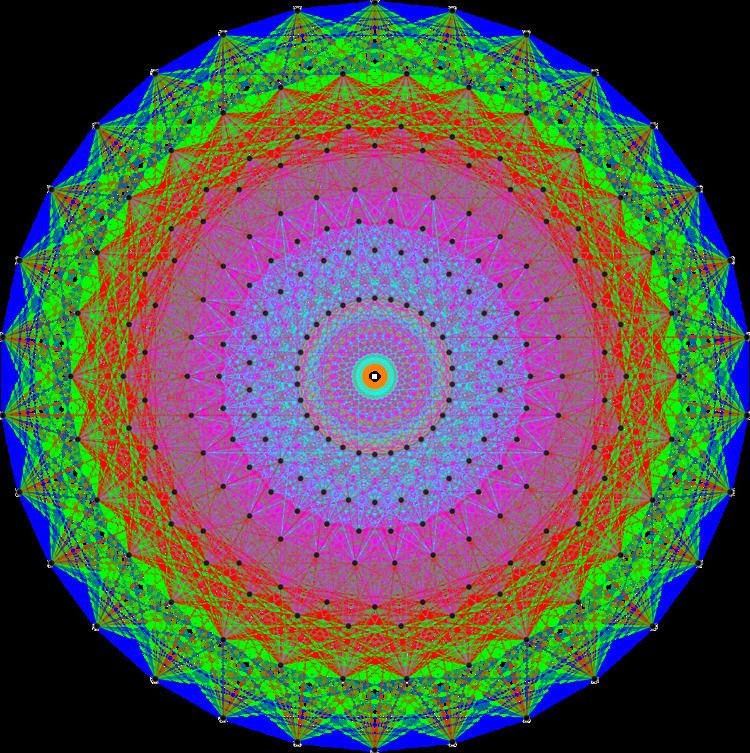In mathematics, a Lie algebra is nilpotent if its lower central series eventually becomes zero.
It is a Lie algebra analog of a nilpotent group.
Let g be a Lie algebra. Then g is nilpotent if the lower central series terminates, i.e. if g n = 0 for some n ∈ ℕ.
Explicitly, this means that
[ X 1 , [ X 2 , [ ⋯ [ X n , Y ] ⋯ ] ] = a d X 1 a d X 2 ⋯ a d X n Y ∈ g n = 0 so that adX1adX2 ⋅⋅⋅ adXn = 0.
A very special consequence of (1) is that
[ X , [ X , [ ⋯ [ X , Y ] ⋯ ] = a d X n Y ∈ g n = 0 ∀ X , Y ∈ g . ( 2 ) Thus (adX)n = 0 for all X ∈ g . That is, adX is a nilpotent endomorphism in the usual sense of linear endomorphisms (rather than of Lie algebras). We call such an element x in g ad-nilpotent.
Remarkably, if g is finite dimensional, the apparently much weaker condition (2) is actually equivalent to (1), as stated by
Engel's theorem: A Lie algebra g is nilpotent if and only if all elements of g are ad-nilpotent,which we will not prove here.
A somewhat easier equivalent condition for the nilpotency of g : g is nilpotent if and only if a d g is nilpotent (as a Lie algebra). To see this, first observe that (1) implies that a d g is nilpotent, since the expansion of an (n − 1)-fold nested bracket will consist of terms of the form in (1). Conversely, one may write
[ [ ⋯ [ [ X n , X n − 1 ] , ⋯ , X 2 ] , X 1 ] = a d [ ⋯ [ X n , X n − 1 ] , ⋯ , X 2 ] ( X 1 ) , and since ad is a Lie algebra homomorphism,
a d [ ⋯ [ X n , X n − 1 ] , ⋯ , X 2 ] = [ a d [ ⋯ [ X n , X n − 1 ] , ⋯ X 3 ] , a d X 2 ] = … = [ ⋯ [ a d X n , a d X n − 1 ] , ⋯ a d X 2 ] . If a d g is nilpotent, the last expression is zero for large enough n, and accordingly the first. But this implies (1), so g is nilpotent.
If g l ( k , R ) is the set of k × k matrices with entries in ℝ, then the subalgebra consisting of strictly upper triangular matrices is a nilpotent Lie algebra.If a Lie algebra g has an automorphism of prime period with no fixed points except at 0, then g is nilpotent.A Heisenberg algebra is nilpotent.A Cartan subalgebra of a Lie algebra is nilpotent and self-normalizing.Every nilpotent Lie algebra is solvable. This is useful in proving the solvability of a Lie algebra since, in practice, it is usually easier to prove nilpotency (when it holds!) rather than solvability. However, in general, the converse of this property is false. For example, the subalgebra of g l ( k , R ) (k ≥ 2) consisting of upper triangular matrices is solvable but not nilpotent.If a Lie algebra g is nilpotent, then all subalgebras and homomorphic images are nilpotent.If the quotient algebra g / Z ( g ) , where Z ( g ) is the center of g , is nilpotent, then so is g .Engel's theorem: A Lie algebra g is nilpotent if and only if all elements of g are ad-nilpotent.The Killing form of a nilpotent Lie algebra is 0.A nilpotent Lie algebra has an outer automorphism, that is, an automorphism that is not in the image of Ad..The derived subalgebra of a finite dimensional solvable Lie algebra over a field of characteristic 0 is nilpotent.
